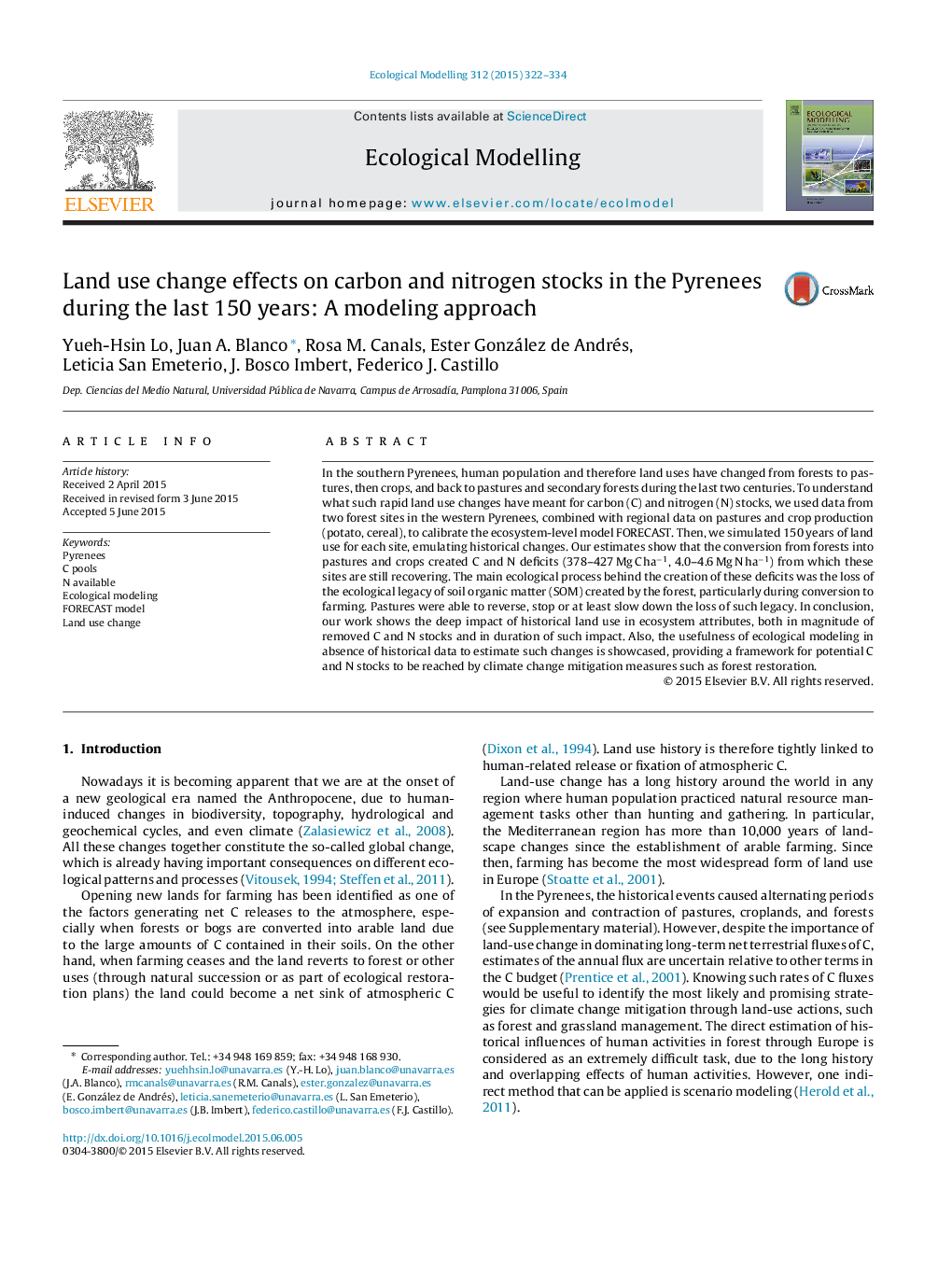| Article ID | Journal | Published Year | Pages | File Type |
|---|---|---|---|---|
| 6296568 | Ecological Modelling | 2015 | 13 Pages |
Abstract
In the southern Pyrenees, human population and therefore land uses have changed from forests to pastures, then crops, and back to pastures and secondary forests during the last two centuries. To understand what such rapid land use changes have meant for carbon (C) and nitrogen (N) stocks, we used data from two forest sites in the western Pyrenees, combined with regional data on pastures and crop production (potato, cereal), to calibrate the ecosystem-level model FORECAST. Then, we simulated 150 years of land use for each site, emulating historical changes. Our estimates show that the conversion from forests into pastures and crops created C and N deficits (378-427 Mg C haâ1, 4.0-4.6 Mg N haâ1) from which these sites are still recovering. The main ecological process behind the creation of these deficits was the loss of the ecological legacy of soil organic matter (SOM) created by the forest, particularly during conversion to farming. Pastures were able to reverse, stop or at least slow down the loss of such legacy. In conclusion, our work shows the deep impact of historical land use in ecosystem attributes, both in magnitude of removed C and N stocks and in duration of such impact. Also, the usefulness of ecological modeling in absence of historical data to estimate such changes is showcased, providing a framework for potential C and N stocks to be reached by climate change mitigation measures such as forest restoration.
Related Topics
Life Sciences
Agricultural and Biological Sciences
Ecology, Evolution, Behavior and Systematics
Authors
Yueh-Hsin Lo, Juan A. Blanco, Rosa M. Canals, Ester González de Andrés, Leticia San Emeterio, J. Bosco Imbert, Federico J. Castillo,
